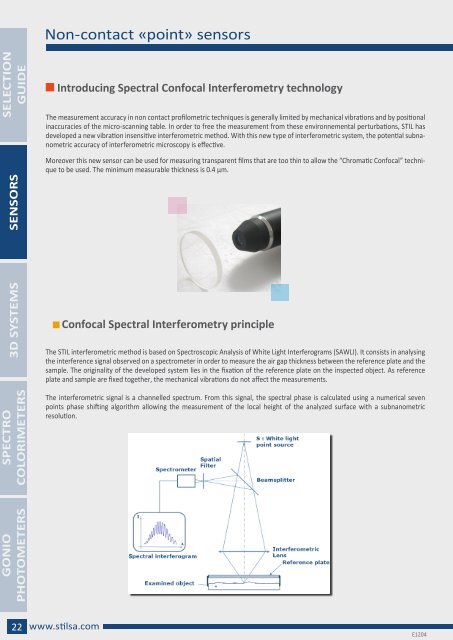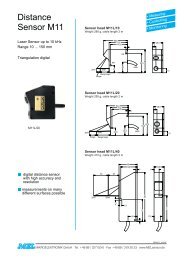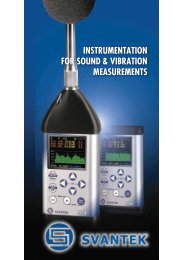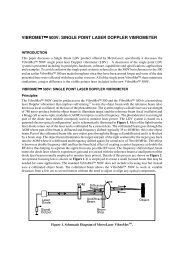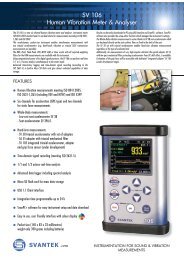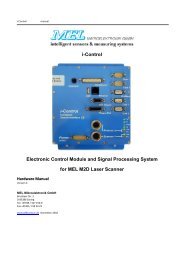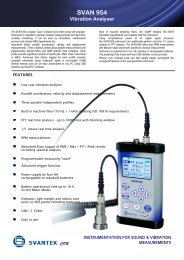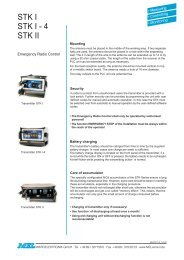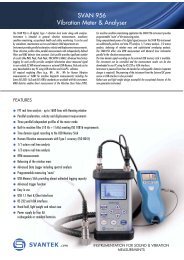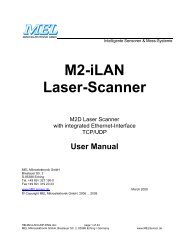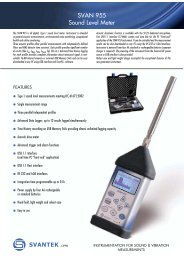2012 e-catalog - STIL
2012 e-catalog - STIL
2012 e-catalog - STIL
Create successful ePaper yourself
Turn your PDF publications into a flip-book with our unique Google optimized e-Paper software.
GONIO<br />
PHOTOMETERS<br />
Non-contact «point» sensors<br />
SELECTION<br />
GUIDE<br />
SENSORS<br />
Introducing Spectral Confocal Interferometry technology<br />
The measurement accuracy in non contact profilometric techniques is generally limited by mechanical vibratons and by positonal<br />
inaccuracies of the micro-scanning table. In order to free the measurement from these environnemental perturbatons, <strong>STIL</strong> has<br />
developed a new vibraton insensitve interferometric method. With this new type of interferometric system, the potental subnanometric<br />
accuracy of interferometric microscopy is effectve.<br />
Moreover this new sensor can be used for measuring transparent films that are too thin to allow the “Chromatc Confocal” technique<br />
to be used. The minimum measurable thickness is 0.4 µm.<br />
3D SYSTEMS<br />
SPECTRO<br />
COLORIMETERS<br />
Confocal Spectral Interferometry principle<br />
The <strong>STIL</strong> interferometric method is based on Spectroscopic Analysis of White Light Interferograms (SAWLI). It consists in analysing<br />
the interference signal observed on a spectrometer in order to measure the air gap thickness between the reference plate and the<br />
sample. The originality of the developed system lies in the fixaton of the reference plate on the inspected object. As reference<br />
plate and sample are fixed together, the mechanical vibratons do not affect the measurements.<br />
The interferometric signal is a channelled spectrum. From this signal, the spectral phase is calculated using a numerical seven<br />
points phase shifting algorithm allowing the measurement of the local height of the analyzed surface with a subnanometric<br />
resoluton.<br />
22<br />
www.stlsa.com<br />
E1204


